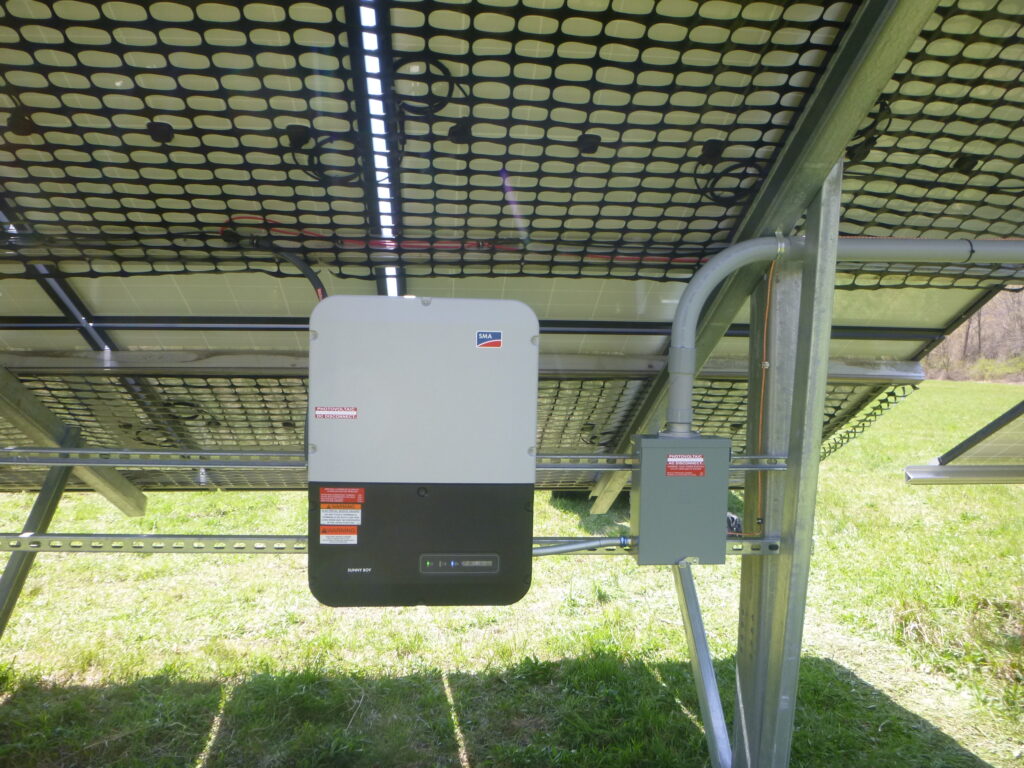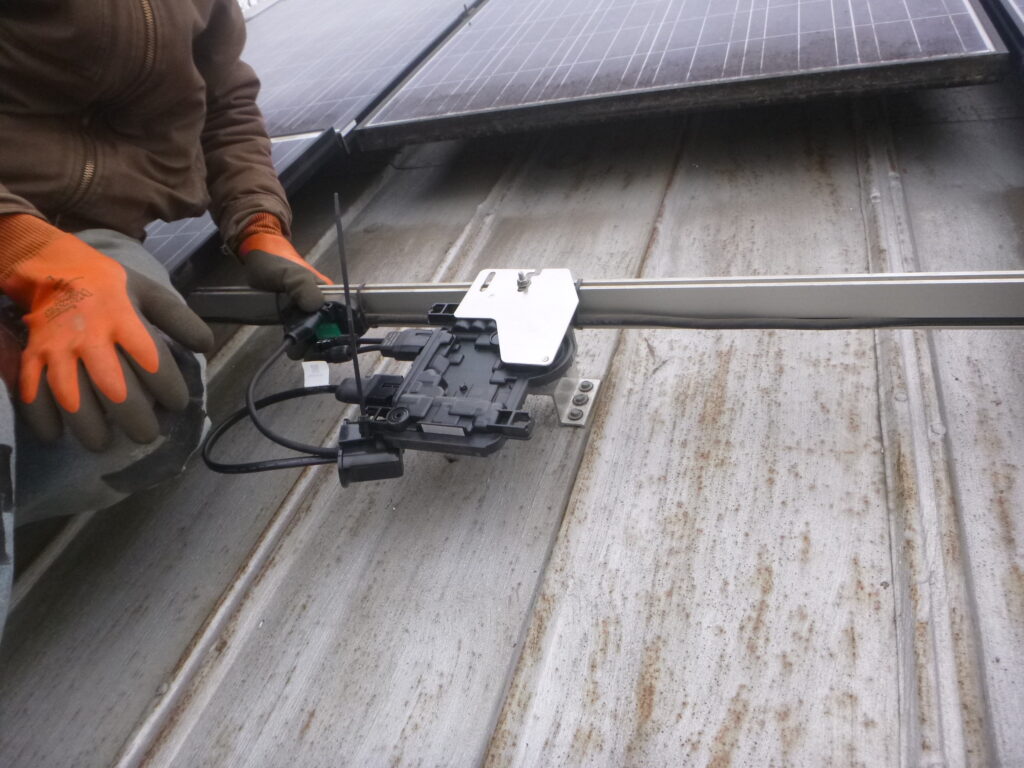An inverter is a crucial component of a typical solar PV system. In this blog post, we’ll explain what an inverter is and what it does, as well as outline some of our design considerations when choosing between microinverters or a string inverter(s).
Solar panels generate direct current (abbreviated DC) electricity. However, our utility grid and most of the appliances in our home are designed to run alternating current (abbreviated AC) electricity. An inverter is an electronic device that transforms the direct current generated by the solar panels into alternating current.
Until roughly 10ish years ago, the vast majority of residential systems used string inverters. These devices centralize the conversion of DC solar-generated power into AC power via one (or more) electronic devices per system or array(s).

Pros of String Inverters:
- Tried & true – this technology has been around for decades.
- Simplicity – the inverter is the PV component most prone to failures. If you have a problem with your system, a single string inverter is more straightforward to troubleshoot and service.
- Cost – until very recently, string inverters were less costly (sometimes much less costly!) than their micro counterparts.
Cons of String Inverters:
- Optimized power output for the entire array – string inverters don’t work well for systems with multiple arrays with drastically different power outputs throughout the day. Simplicity is required.
- Single point of failure – if your string inverter fails, all modules that depend on it no longer produce power for you.
- The useful lifespan of a string inverter is less than the useful lifespan of your modules. If your Sungineer system leverages a string inverter, we will calculate your payback period assuming that you will need to replace your string inverter after 15ish years.
- Limited monitoring – your system performance can only be monitored at the array level, not the module level.
- Expansion capabilities restricted by inverter size – you may not be able to add just a couple of modules without having to add another string inverter.
- Additional safety equipment required – all Sungineer systems abide by NEC requirements; all roof-mounted systems include rapid shutdown capabilities to protect firefighters in the event of an emergency. However, this requires additional equipment (and therefore additional cost).
(Note: when you’re reading articles on the internet, you may see claims that one poorly performing module tanks the performance of the entire array when connected to a string inverter. That’s not exactly true – modern string inverters can account for power output variations between modules more intelligently than their predecessors. See SMA’s information on ShadowFix if you’re curious.)
Around a decade ago, manufacturers began integrating miniature inverters onto each panel: the microinverter. Microinverters decentralize the DC to AC power conversion and offer some intriguing benefits – with some potential pitfalls.

Pros of Microinverters:
- No single point of failure – if a single MI fails, the rest of the modules continue to produce power.
- Module-level performance monitoring – if you like to geek out on spiffy monitoring dashboards, BOY HOWDY are you gonna like your microinverter system! 😉
- Easier to expand incrementally – you won’t be limited by your inverter size when adding a couple of modules to expand your system.
- Optimized power output for each module – microinverters are great for systems that require multiple arrays with different orientations.
- Rapid shutdown – microinverters provide for rapid shutdown without additional equipment.
Cons of Microinverters:
- Cost – microinverters are almost always more expensive than a string inverter(s).
- However, we expect this will change as the residential market shifts to favor microinverters. Just this summer, for the first time, we quoted a system where microinverters were cheaper than 2 string inverters.
- Newer technology with a mediocre history of reliability – early iterations of microinverters suffered from reliability and durability problems.
- However, modern microinverters seem to be significantly more reliable. Impressively, some manufacturers now offer a 25-year parts warranty on their microinverters! Given the planned, routine replacement of string inverters half-way through the PV system lifespan, if these longevity claims hold up, it will be a very strong “pro” for microinverters.
- Dozens of points of failure + more complex to troubleshoot and maintain – as previously noted, inverters, whether string or micro, are the most likely component to fail in a PV system. Instead of having a single piece of equipment to troubleshoot in your garage, now you have 30 pieces of equipment to troubleshoot on your roof – and those electronics on the roof are exposed to harsher conditions, too.
The Bottom Line
The inverter design choice is entirely dependent on YOUR unique situation!
Are you planning an oversized ground-mount system, facing due south, with no shading? You will probably be fine with a string inverter.
Do you live in a house with multiple dormers on the roof and some trees to the west? And you might want to add panels to your garage in a couple of years? Oh, and you start your day by logging into your Sense energy monitor portal? Your system will almost definitely leverage microinverters.
In reality, most homeowners fall somewhere between these two extremes. At Sungineer Solar, we enjoy getting to know you, your needs, and your priorities, so we can design a system we know you’ll love!
